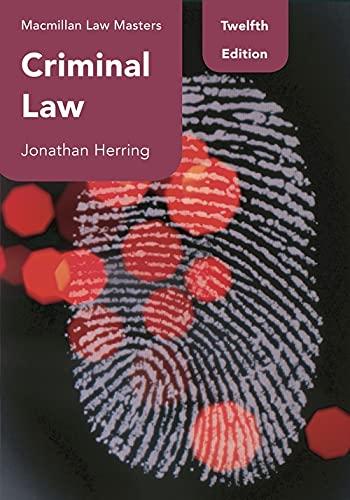Question
combine this information to be a critical evaluation: In the context of our client's situation and noting the information provided above in the memorandum, the
combine this information to be a critical evaluation: In the context of our client's situation and noting the information provided above in the memorandum, the Kioa v West[1] case is particularly relevant as the decision has affected his rights, interests and legitimate expectations.[2] Mr Brown could argue that the Member Jones decision violated procedural fairness, particularly the prior hearing rule. This violation of procedural fairness may provide grounds for judicial review of the AAT's decision. The AAT is required to allow each party to present their case and respond to evidence presented against them.[3] Mr Brown's inability to provide evidence before Member Jones undermines this fundamental principle. Furthermore, there may be grounds to challenge the decision by Member Jones based on apprehended bias by establishing evidence that the decision-making process was not impartial.[4] The test is concerned with possibility (real and not remote) and not probability.[5] Member Jones's extensive reliance on Member Carr's report, including copying highly controversial information specific to Mr Brown's situation, raises questions about bias in the decision-making process. It follows that Mr Brown was denied procedural fairness by Member Jones.[6] In the circumstances, as we found them to exist in our consideration of the first ground, this would be more than mere disclosure of the Tribunal's proposed and prospective reasoning process, and more than disclosure of "every matter the tribunal might think relevant" to the review: cfSZBYRat[15]. That is because those parts of the previous decision record by Member Corrigan are, in this context, better seen as "evidentiary material or documentation" (seeMinister for Immigration and Citizenship v SZLFX[2009] HCA 31;238 CLR 507at[23], referring toSZBYR) which the second Tribunal proposes to adopt in identical terms. That is not a matter of which a review applicant could be expected to have notice. In that sense, it is analogous to the need to alert a review applicant to any departure from findings made in her or his favour by a delegate as the High Court held inSZBEL[2006] HCA 63; 228 CLR 152. Of course in the current context no amount of compliance withs424Acould have cured the jurisdictional error we have found existed in Member Boddison's decision. In a review where some use is sought to be made of findings of a previous tribunal in respect of the same review applicant, falling short of an abdication of the tribunal's task (and assuming such a technique could be lawfully adopted) we consider that compliance withs424Ais required.
Step by Step Solution
There are 3 Steps involved in it
Step: 1

Get Instant Access to Expert-Tailored Solutions
See step-by-step solutions with expert insights and AI powered tools for academic success
Step: 2

Step: 3

Ace Your Homework with AI
Get the answers you need in no time with our AI-driven, step-by-step assistance
Get Started


